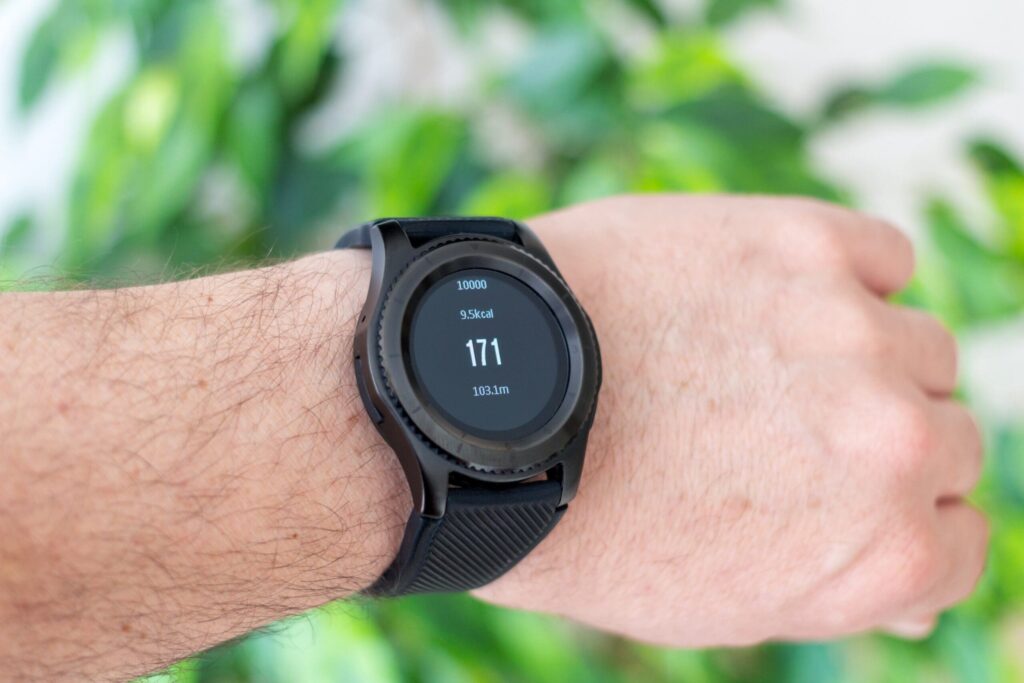Have you ever been in the middle of a workout and looked down at your watch to find an unexpected number in the heart rate data field? I know I have.
“There’s no way I’m beating at 180,” I’ll think. And it turns out, my thoughts were probably right. Data from your wrist heart rate monitor is not always reliable.
Tracking your heart rate data is interesting because it can tell you a lot about your fitness and general health.
Especially when you exercise, knowing your heart rate can tell you whether you’re working close to your maximum or if you could push a little harder. Conversely, it can also tell you if you’re working too hard during a training session that was meant to be easy.
While your heart rate is affected by variables such as sleep and stress, it is still a very reliable metric to measure exercise intensity at any given time. Only applicable, though, if the data is accurate.
How do wrist heart rate monitors work?
To understand why heart rate data from your new sports watch or fitness tracker isn’t always reliable, it’s good to know what optical heart rate monitors (the type you find in wrist-worn tech) do to read the speed at which your heart is beating.
The number you see on your screen, the data format, is beats per minute.
 Source: Artur Łuczka on Unsplash
Source: Artur Łuczka on UnsplashWrist-worn heart rate monitors work by shining a light – that green pulsing light you see when you take it off – into your blood vessels and detecting the changes in blood volume every time your heart beats.
How does this actually work, you ask? Every time your heart beats, it pushes blood through your body. By shining a green light to the capillary veins in your wrist, your fitness tracker can then use a sensor to detect the reflected light and see how fast your blood is pumping.
While the data is processed alongside motion information (detected by your tracker’s accelerometer), the algorithms don’t always produce 100% reliable pulse readings.
Wrist heart rate monitor accuracy
Wrist-worn devices will always be at a disadvantage compared to chest straps simply because the latter sit closer to the heart (the source of the information), allowing them to capture a stronger signal.
No matter how good the tech is, the further you are from the data source the less reliable the information becomes.
However, it’s important to know that wrist heart rate monitors are generally accurate, especially when at rest or during activities that don’t involve a lot of movement such as walking or yoga. Algorithms have come a long way since wrist-worn fitness trackers started to become popular.
Nevertheless, there are still a handful of factors that can affect accuracy and a few reasons why you can’t always trust the data.
Movement can disrupt the accuracy of your optical heart rate monitor for a handful of reasons:
- Movement influences how the blood moves around in your body, especially when fast-paced.
- If you wear your tracker slightly loose, movement can shift it around and create space between the sensor and your skin, which can prevent data from being captured.
- The algorithm might pick up on the wrong signal when the movement’s cadence or rhythm are similar to the speed at which your heart beats.
A 2019 study from the Cardiovascular diagnosis and therapy journal measured the accuracy of commercially available heart rate monitors at different running speeds. The study, which is free to read online, found that while wrist-worn heart rate monitors were accurate at rest, their accuracy decreased as intensity increased.
While the study had some limitations – indoor treadmill running can’t necessarily be compared to running outdoors with varying terrain and different arm motions – the findings are supported by a 2020 study that analysed accuracy of optical sensors for athletes in different age ranges.
The study, led by Hsueh-Wen Chow, found that while optical heart rate sensors generally produce accurate readings irrespective of the age of the user, they do have a tendency to produce extreme readings in some cases.
 Source: dusan jovic on Unsplash
Source: dusan jovic on UnsplashBecause optical heart rate monitors pick up changes in your blood volume, the algorithm within your watch has to detect what is your actual blood flow and what are other signals that might influence how much light gets reflected back to the sensor.
A common error is seen when running, as the repeating signal of running cadence can easily be mistaken for a heart rate measurement the algorithm might expect (e.g., 160 steps per minute vs 160 beats per minute).
As movements become erratic and your heart rate increases, the devices tend to become less accurate, a 2019 study found.
Read more: Fat Burning Heart Rate: Can you Exercise at a Certain Intensity to Burn Maximum Fat?
Why is heart rate data from wrist monitors wrong?
To summarise, there’s a handful of reasons why wrist optical heart rate sensors are at a disadvantage compared to chest straps:
- They sit relatively far away from the source of data
- Reliable readings rely on little noise
- They might detect the wrong signal
- Movement of sensor can disrupt accuracy
If you want to measure your heart rate with close to 100% accuracy or have very specific goals to meet with your fitness training, a chest strap is the way to go.
However, if you don’t care about perfect accuracy or find chest straps uncomfortable (I know I did), a wrist heart rate monitor will do a good enough job most of the time. Additionally, they can be worn all day long, while you’d generally take your chest strap off as soon as you finish training.
Whether or not you should use and trust your fitness tracker comes down to your individual goals as an athlete. If you find value in fitness trackers and inaccurate heart rate data is not a deal breaker for you, then you know to take readings with a pinch of salt. When they do seem wrong, you’re probably right.
Image Sources
- watch with wrist heart rate monitor data: Artur Łuczka on Unsplash
- athlete contemplates fitness tracker data: dusan jovic on Unsplash
- wrist-heart-rate-monitor-reliability: Luis Santoyo on Unsplash
